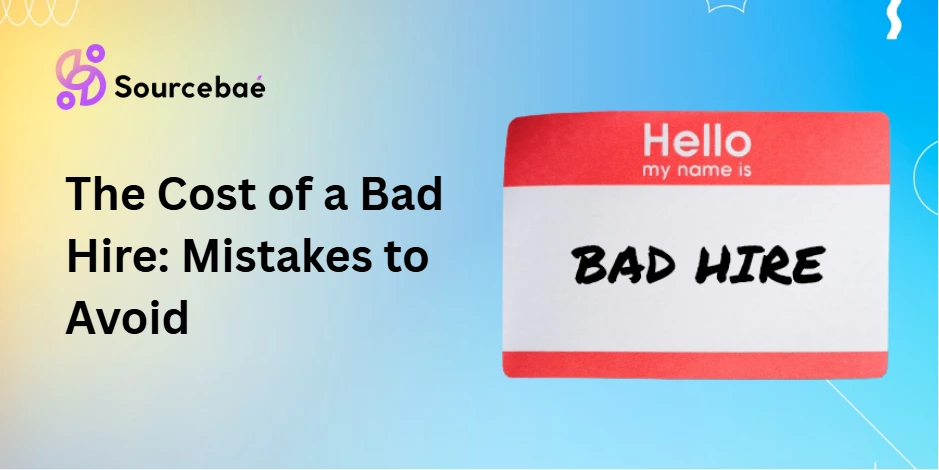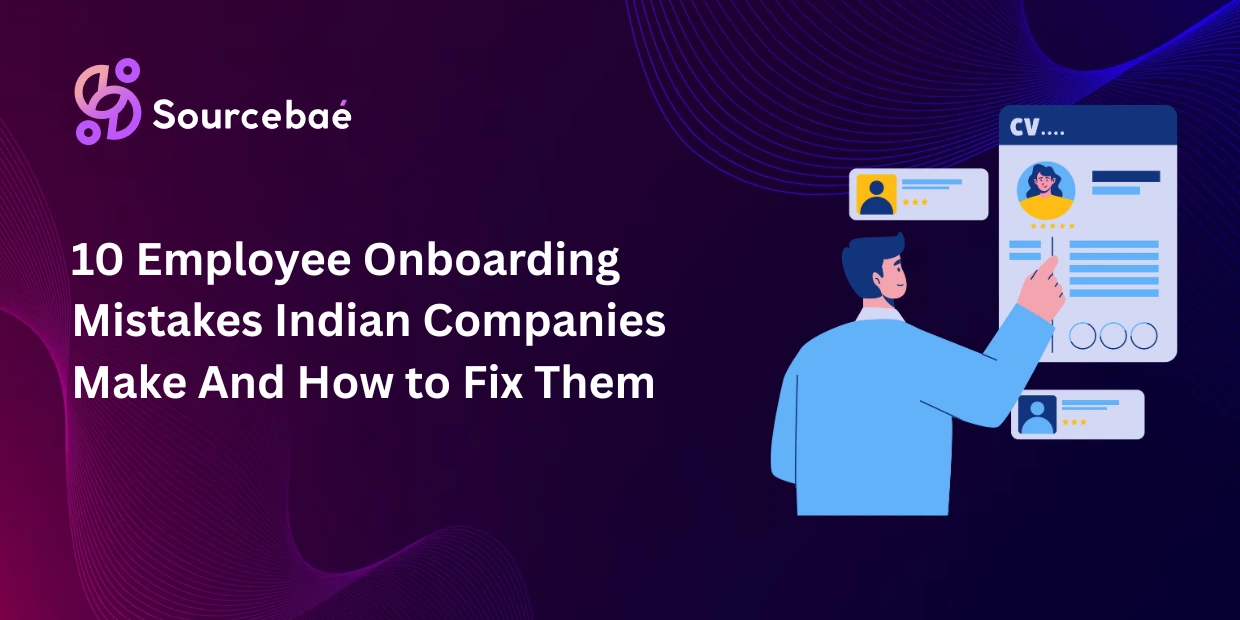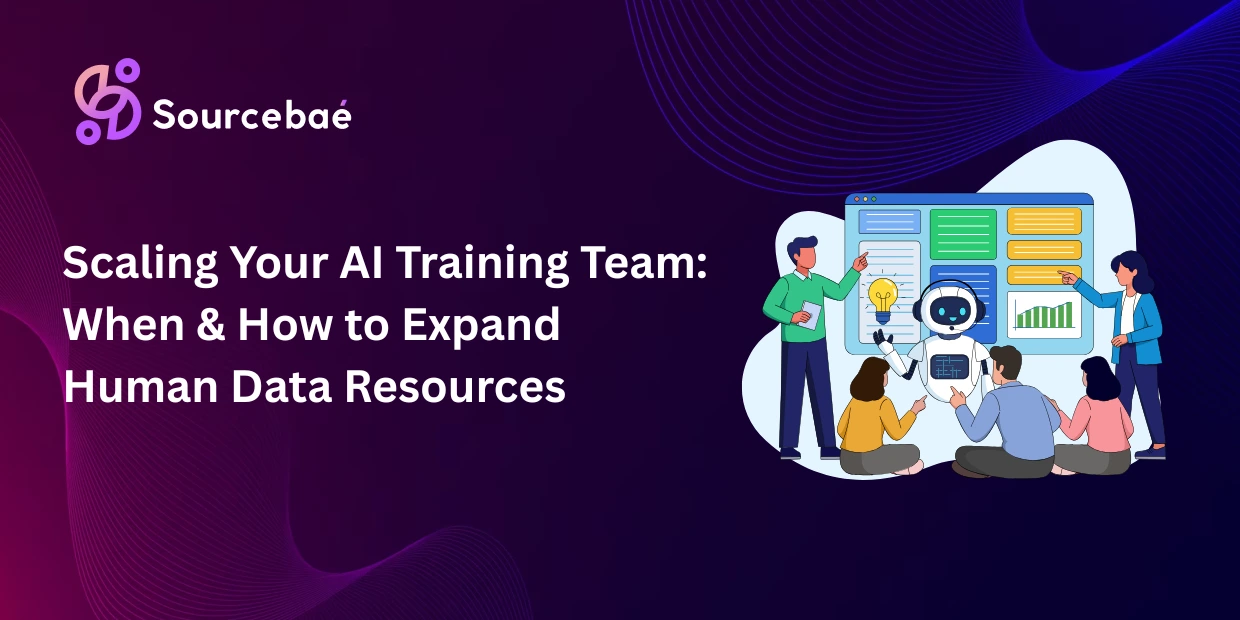Making the wrong hiring decision isn’t just an HR headache—it’s a business catastrophe that can cost companies tens of thousands of dollars, damage team morale, and derail organizational goals. With 74% of employers having made at least one bad hire and 46% of new employees failing within their first 18 months, understanding the true cost of poor hiring decisions and how to avoid them has never been more critical.
The True Financial Impact of Bad Hires
The financial consequences of a bad hire extend far beyond the employee’s salary. According to the U.S. Department of Labor, a bad hire can cost up to 30% of the employee’s first-year earnings. For a position with a $60,000 salary, that translates to $18,000 in direct costs alone. However, this figure only scratches the surface of the true financial impact.
Recent studies reveal even more staggering numbers. CareerBuilder research indicates that 75% of employers hired the wrong person in the past year, with the average cost reaching $17,000 per bad hire. At the extreme end, some organizations report losses of up to $240,000 for senior-level position. When factoring in all direct and indirect costs, bad hires can cost between 3-5 times the employee’s annual salary.
Hidden Costs That Add Up Quickly
Beyond the obvious expenses, bad hires create a cascade of hidden costs that can devastate organizational budgets:
Recruitment and Onboarding Expenses: The Society for Human Resource Management estimates these costs at $4,700 per hire in 2022. When a bad hire doesn’t work out, organizations must double this investment to find a replacement.
Productivity Loss: Perhaps the most significant hidden cost, productivity losses can reach 150% of the recruitment cost. Bad hires not only fail to contribute meaningfully but also drag down team performance as colleagues compensate for their shortcomings.
Management Time: 34% of CFOs report that managers spend 17% of their time supervising poorly-performing employees. This represents a massive opportunity cost, as skilled managers are diverted from strategic initiatives to babysit underperformers.
Employee Turnover: Bad hires create a toxic ripple effect. When good employees become frustrated with poor performers, they’re more likely to leave. Harvard Business Review research shows that 80% of employee turnover can be attributed to bad hiring decisions.
Why Bad Hiring Happens
The Most Costly Hiring Mistakes
Understanding where hiring processes go wrong is crucial for prevention. Based on extensive research and industry analysis, here are the most expensive mistakes organizations make:
1. Rushing the Hiring Process
Time pressure is the enemy of good hiring decisions. When organizations rush to fill positions, they often skip crucial steps like thorough background checks, multiple interviews, or skills assessments. The urgency to get someone in the door frequently leads to hiring the first available candidate rather than the right one.
Solution: Establish a structured hiring timeline with built-in checkpoints. While speed is important, sacrificing quality for expediency almost always backfires. Plan ahead and start the hiring process before positions become critical.
2. Inadequate Job Descriptions
Vague or misleading job descriptions attract the wrong candidates and repel qualified ones. Generic templates that don’t reflect the actual role or company culture set both employers and employees up for failure.
Solution: Create detailed, specific job descriptions that clearly outline responsibilities, required skills, company culture, and growth opportunities. Be honest about challenges and expectations to ensure candidates can make informed decisions.
3. Lack of Structured Interview Process
Unstructured interviews are twice as ineffective as structured ones in predicting job performance. When interviewers rely on gut feelings and ask different questions to each candidate, bias and inconsistency creep in, leading to poor decisions.
Solution: Implement a structured interview process with predetermined questions, clear evaluation criteria, and multiple interviewers. Use behavioral and situational questions that probe specific competencies required for the role.
4. Focusing Solely on Technical Skills
Hiring for skills while ignoring cultural fit is a recipe for disaster. An employee might excel technically but destroy team morale if they don’t align with company values or work style.
Solution: Assess both technical competencies and cultural fit. Include team members in the interview process and use values-based questions to evaluate alignment with company culture.
5. Inadequate Reference and Background Checks
Up to 75% of HR leaders have caught lies on resumes, yet many organizations still skip thorough reference checks. This oversight can lead to hiring candidates who misrepresented their qualifications or have problematic work histories.
Solution: Always conduct comprehensive background checks and speak with multiple references, particularly former supervisors. Ask specific questions about performance, work ethic, and areas for improvement.
The Seven Cost Pillars of a Bad Hire
| Pillar | How Costs Accrue | Cost Range* | Key Data Points |
|---|---|---|---|
| 1. Recruiting & Onboarding | Ads, recruiter fees, background checks, orientation. | $4,000–$7,645 per hire. | SHRM places average cost-per-hire at $4,683. |
| 2. Salary & Benefits Waste | Pay during low productivity months. | 1–6 months of wages. | Dept. of Labor: 30% of first-year salary lost. |
| 3. Lost Productivity | Manager supervision time, rework, missed deadlines. | 17% of manager time. | Managers spend ≈1 day/week babysitting bad hires. |
| 4. Team Morale & Turnover | Burnout, voluntary exits, disengagement. | 20–30% output decline. | Gallup: disengagement costs US$450–$550 billion. |
| 5. Customer Impact | Errors, poor service, lost accounts. | 32% customers leave after one bad experience. | Brand damage harder to quantify. |
| 6. Legal & Compliance | Wrongful termination, harassment suits. | $10,000–$250,000+. | High-level mis-hires can spike to $240,000 total. |
| 7. Replacement & Vacancy | Re-advertising, interviews, interim coverage. | Adds 36–44 days to fill. | Opportunity cost during vacancy $100–$500/day. |
Quantifying the Damage: A Calculation Framework
Formula adapted from DistantJob:
Cost of Bad Hire=Cost-Per-Hire+(0.30×Annual Salary)+(0.17×Manager Monthly Pay×Months Employed)
Cost of Bad Hire=Cost-Per-Hire+(0.30×Annual Salary)+(0.17×Manager Monthly Pay×Months Employed)
Example: Software developer at $100,000 annual salary; manager earns $120,000; mis-hire identified after 4 months.
- Cost-Per-Hire (SHRM) = $4,700.
- 30% of Salary = $30,000.
- Manager Supervision = 0.17 × $10,000 × 4 = $6,800.
Total = $4,700 + $30,000 + $6,800 = $41,500 lost within four months.
Red Flags Every Hiring Manager Should Recognize
Identifying potential problems early in the hiring process can save organizations from expensive mistakes. Here are the critical warning signs to watch for:
During the Interview Process
Lack of Preparation: Candidates who know nothing about the company, ask questions already answered in the job posting, or seem unprepared demonstrate a lack of genuine interest.
Negative Talk About Previous Employers: While discussing challenges is normal, candidates who consistently blame others or speak negatively about past employers may bring that attitude to your organization.
Inconsistent Stories: Watch for candidates whose explanations don’t align with their resume or who provide vague, evasive answers when asked for specific examples.
Overconfidence or Arrogance: Confidence is positive, but candidates who interrupt, dismiss others’ ideas, or claim to know everything may struggle with teamwork and feedback.
Poor Communication Skills: If candidates struggle to express themselves clearly during interviews, they’ll likely face similar challenges in the workplace.
Early Performance Indicators
Once hired, certain behaviors signal potential problems:
Lack of Openness: Employees who try to hide their progress or avoid showing their work often struggle with accountability and may be covering up performance issues.
Resistance to Feedback: New hires who react defensively to constructive criticism or refuse to implement suggestions demonstrate a lack of growth mindset.
Attendance Issues: Frequent tardiness, excessive sick days, or unexplained absences within the first few months often indicate disengagement or lack of commitment.
Negative Attitude: Constant complaining, resistance to company policies, or reluctance to participate in team activities can quickly poison workplace culture.
Best Practices for Avoiding Bad Hires
Preventing bad hires requires a systematic approach that addresses each stage of the hiring process:
1. Invest in Proper Planning
Define success clearly before posting any job. Specific outcomes must this person achieve? What skills are non-negotiable versus nice-to-have? What does success look like in the first 90 days?
Create detailed job descriptions that accurately reflect the role, expectations, and company culture. Include information about growth opportunities, challenges, and how the position fits into the broader organization.
2. Implement Structured Assessment Methods
Use standardized interviews with predetermined questions that assess both technical skills and cultural fit. Every candidate should answer the same core questions to enable fair comparison.
Incorporate skills testing where appropriate. Rather than relying solely on resumes and interviews, use practical assessments that demonstrate actual capabilities.
Conduct panel interviews involving multiple stakeholders, including potential teammates, managers, and HR representatives. This provides diverse perspectives and reduces individual bias.
3. Thorough Due Diligence
Always check references and verify credentials. Ask former supervisors about the candidate’s performance, work style, and areas for improvement.
Conduct comprehensive background checks as legally permissible. This includes employment verification, education confirmation, and any relevant criminal history checks.
Look for patterns in employment history. Frequent job changes, unexplained gaps, or consistent short tenures may indicate underlying issues.
4. Cultural Fit Assessment
Clearly communicate company values during the interview process. Use specific examples and scenarios to help candidates understand your workplace culture.
Ask behavioral questions that reveal how candidates handle situations that commonly arise in your organization. “Tell me about a time when…” questions provide insights into actual behavior rather than hypothetical responses.
Include team members in the interview process. They can assess whether the candidate would work well with existing team dynamics.
5. Set Clear Expectations
Establish probationary periods with specific performance metrics and regular check-ins. This provides a structured way to assess fit and performance early.
Create detailed onboarding plans that clearly outline expectations, provide necessary training, and establish regular feedback sessions.
Define success metrics upfront so both you and the new hire understand what constitutes good performance.
Proven Strategies to Prevent Bad Hires
| Strategy | Implementation Tips | Result |
|---|---|---|
| Data-Driven Job Analysis | Define must-have vs. nice-to-have competencies. | Candidate quality increases by 34%. |
| Structured Interviews | Use standardized question bank; scorecards. | Doubles correct-hire odds. |
| Assessment Tech | Pre-employment testing for skills, personality. | Cuts hiring cycle 30% while reducing mis-hires. |
| Collaborative Hiring | Panel debrief; consensus before offer. | Lowers bias; improves cultural alignment. |
| Onboarding Excellence | 30-60-90-day plans; mentor pairing. | Boosts retention 82% after first year. |
Legal & Compliance Minefields
- At-Will Doesn’t Equal Risk-Free: Wrongful termination suits climb when documentation is weak.
- Ban-the-Box & Fair Credit Reporting Act: Background checks must follow federal, state, and local rules.
- ADA & EEOC: Poorly designed tests can unintentionally screen out protected classes. Validate assessments before launch.
Technology Solutions for Smarter Hiring
List for illustration; vet vendors for security & compliance.
Culture, Branding & Candidate Experience
Poor candidate experiences can snowball into brand-damaging Glassdoor reviews, repelling top performers and perpetuating bad hiring cycles. Craft transparent job previews, timely feedback loops, and inclusive language to attract aligned talent.
Recovering from a Bad Hire
- Recognize Quickly: Signs include consistent underperformance, toxic behavior, repeated attendance issues.
- Structured Performance Plan: 30-day objectives with measurable metrics.
- Exit Gracefully: Offer respectful separation and knowledge transfer.
- Conduct Post-Mortem: Identify root causes—screening gaps, rushed interviews, unrealistic requirements.
- Iterate Process: Update job criteria, expand talent pools, retrain interviewers.
The ROI of Getting Hiring Right
While the cost of bad hires is substantial, the return on investment for implementing proper hiring practices is equally impressive. Organizations with effective hiring processes experience 50% lower turnover rates. Companies that invest in structured interviews and comprehensive assessment methods see significant improvements in employee performance and retention.
Quality hires contribute far beyond their job descriptions. They bring positive energy, collaborate effectively, and often become catalysts for team performance improvements. The investment in proper hiring practices pays dividends through reduced turnover, improved productivity, and enhanced company culture.
Conclusion
The cost of a bad hire extends far beyond salary and benefits—it encompasses lost productivity, damaged morale, increased turnover, and substantial financial losses that can reach hundreds of thousands of dollars. However, these costs are largely preventable through systematic hiring practices that prioritize thorough assessment, cultural fit, and structured decision-making.
By implementing structured interviews, conducting comprehensive background checks, assessing cultural alignment, and setting clear expectations, organizations can dramatically reduce their risk of bad hires. The investment in proper hiring practices—including time, resources, and training—pays substantial dividends through improved employee performance, reduced turnover, and stronger organizational culture.
Remember that hiring is not just about filling positions quickly; it’s about building teams that drive organizational success. In today’s competitive landscape, companies that master the art and science of hiring gain a significant advantage over those that continue to make costly hiring mistakes. The question isn’t whether you can afford to invest in better hiring practices—it’s whether you can afford not to.
Frequently Asked Questions
How much can a bad hire cost in 2025?
Industry studies show direct costs average 30% of first-year salary, while total impact—including turnover, morale, and customer loss—can climb to 3× salary for senior roles.
What is the number-one mistake that causes bad hiring?
Speed over diligence. Filling vacancies under time pressure bypasses rigorous assessment protocols and drives mis-alignment.
How soon should you terminate a confirmed bad hire?
As soon as objective evidence confirms mismatch and improvement plans fail. Early exits minimize sunk costs and morale damage.
Are AI tools reliable for screening candidates?
AI screening boosts efficiency but must be audited for fairness and accuracy to avoid bias and regulatory penalties.






